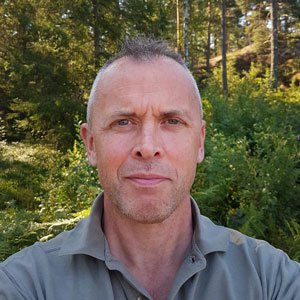Production forests constitute 53 percent of Sweden’s land area, and more than half of it is owned by private forest owners. Despite owners having different goals, most forests are managed in the same way. Why is that? In a new research project, researchers from SLU will investigate what governs how private forest owners manage their forests. Knowledge that can be used in a transition to more varied forests and more sustainable forestry.
Production forests suffer the greatest loss of biodiversity, deterioration and fragmentation among forest habitats according to the Swedish Environmental Protection Agency's follow-up of biodiversity in forest ecosystems.
"Increased diversity at the landscape level is needed in order to halt the loss of biodiversity and create ecosystems that are more resilient to damage and climate change. We believe that the individual goals of the forest owners may be the key to increasing the variation" says Fredrik Widemo, researcher at SLU and project leader.
What drives forest owners' choices?
Today, the vast majority of Swedish forests are managed through rotation forestry, where even-aged forests dominated by pine or spruce are created through planting and thinning before being felled at the end of the rotation period. This is despite studies showing that the values from more varied forests are higher for society, and that far from all forest owners have the same goal.
Currently, there is insufficient knowledge about what factors govern forest owners' decisions about how their forests should be managed in order to understand what limits the use of alternative forms of management in forestry. There is also a lack of knowledge about how different strategies affect future yields from forestry and what flexibility the forest owner has to adjust the focus of their forest management under different scenarios.
Attitudes and norms investigated
In the new project, the researchers will investigate attitudes and behaviours of forest owners as well as forest advisers, and compare how well different types of forest management deliver against the goals. This will be done both for conventional methods and for alternative management strategies not based on rotation forestry.
The results will reveal the potential of different methods for delivering preferred ecosystem services, meaning benefits that ecosystems bring to us humans. This can be anything from timber and carbon storage to mushroom picking and game meat.
"The knowledge gained will make it possible to tailor the advice so that forest owners with different goals can find their preferred solutions. We hope implementation of our results will increase the sustainability in forestry, potentially while reducing conflict as some forest owners can reach new goals while others can continue business as usual with reduced or no negative impacts”, says Fredrik Widemo.

Fredrik Widemo
(Click for high resolution image.)

